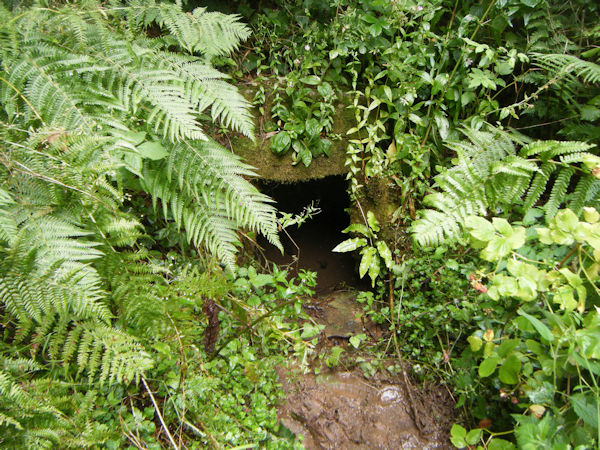 |
Dedication: Saint Abb Location: Ayton Castle Coordinates: 55.84554N, -2.10962W Grid reference: NT932613 Heritage designation: none |
HOME - SCOTLAND - SCOTTISH BORDERS
 |
Dedication: Saint Abb Location: Ayton Castle Coordinates: 55.84554N, -2.10962W Grid reference: NT932613 Heritage designation: none |
Like many of her contemporaries, the 7th century St Abb, commonly called Ebb or Ebba, was originally a princess. Daughter of the King of Northumbria, Ethelfrid the Ravager, and thus the sister of both King Oswiu of Northumbria and the far-famed St Oswald, Abb spent her early years in exile in Scotland after her uncle Edwin, who had been a fierce rival of her father, succeeded him to the throne. It was in Scotland that she, along with her brothers, became a devout Christian, Ethelfrid having been a strong pagan. After Edwin's death, Oswald became king, and Abb returned to Northumbria, where a Scottish king named Edan requested her hand in marriage; Abb quickly declined, and shortly "received the veil" from Bishop Finan of Lindisfarne. Her brother Oswiu, now on the throne, helped her to found a nunnery in County Durham, on the banks of the River Derwent, at a place which subsequently became known as "Ebchester". However, this was clearly not enough for Abb, who soon moved further north to a remote headland near Coldingham where she is said to have founded and become the abbess of a double monastery, housing both monks and nuns (alternative versions of the story claim that St Aidan is responsible for the foundation).
Though the community here only lasted until the 8th century, it enjoyed a colourful existence. During her time as abbess, St Abb welcomed a number of well-known figures to the headland, including St Cuthbert, who was apparently entertained there by the nuns for a week, and St Etheldreda. It is thought that the original settlement would have been formed of a series of separate cells or huts constructed of turf or wood, and covered with reeds; unfortunately, the entire complex reportedly burned to the ground in the late 7th century, shortly after the death of St Abb. According to tradition, this was a judgement from God: the Venerable Bede asserts that the community had become sinful and lazy under St Abb's leadership. In his own words, the "cells which were built for praying or reading" had been "converted into places of revelling, drinking, conversation, and other allurements", and during the night, when the monks and nuns were expected to be praying, all were "either wrapt in slothful sleep", or "awake to commit sins". In fact, the potential problems of a double monastery were also beginning to come to light, with "the virgins" apparently often "gain[ing] for themselves the friendship of strange men".
This was not the end for the monastery, however, as it seems to have been rebuilt from the ashes at some point after this fire. The members of this new community, now led by Abb the Younger, appear to have been much more devout than those of St Abb's original foundation. Unfortunately, this monastery was just as short lived as the first one: its location, on a promontory overlooking the North Sea, though initially beneficial for trade, made it a prime target for Danish raiders, who did indeed sail to St Abb's Head at some point during the 8th century. Seeing the attackers approaching, and in a bid to preserve her virginity, Abb the Younger is said to have sliced off both her nose and lips, an example that was apparently immediately followed by the rest of the nuns. Reputedly out of disappointment, the Danes proceeded to burn the monastery to the ground, along with its inhabitants, who nonetheless managed to preserve their chastity.
Like many foundations that were utterly ravaged by the Danes, St Abb's monastery was rebuilt, in this case in a completely different (and undoubtedly more sensible) location, several centuries after its destruction. This new monastery, which became known as Coldingham Priory, followed the Order of St Benedict, and was founded in the late 11th century. It is not clear whether the institution possessed any of St Abb's relics, some of which had already been retrieved from her grave on St Abb's Head by Alfred Westoue, a monk of Durham, in the early 11th century; her foot, at least, found its way to Durham Cathedral. Nonetheless, the cult of the saint was strong in the area: a medieval chapel, presumably used by pilgrims to the headland, was located near the site of her monastery on Kirk Hill, and was still known as "St Abb's Kirk" into the late 19th century; this chapel is known to have been under the ownership of Coldingham Priory.
In fact, the priory possessed a large amount of land in the surrounding area. According to an article entitled The Priory of Coldingham, written by John Stuart and published in The History of the Berwickshire Naturalists' Club in 1868, this included, if "an ancient Rental of the Priory" is to be believed, some land in the vicinity of Ayton Castle. According to this document, a croft and two acres, located in Ayton, were then rented out to a man named Roger, who is described as "homo Sanctœ Ebbœ", which means something like "serf" or "vassal" of St Abb (as a serf or vassal, Roger would have owed the priory his service and allegiance in return for use of the land). This name undoubtedly refers to the existence of St Abb's Well, which presumably would have been located within this plot of land, and thus held under the ownership of Coldingham Priory. It is worth noting that this name cannot refer to the nearby church, which bears the unusual patronage of St Dionysus, and has done so since at least the close of the 12th century.
This is not the only historical document that references the holy well, however. According to Stuart, a "charter of a toft in the town of Ayton" that dates to 1250 mentions eight acres of land situated "in the plain between the Well of St. Ebba and Littledene"; unfortunately I have not been able to find the original wording of this charter, which undoubtedly would have been composed in Latin, but Stuart's translation nevertheless proves that St Abb's Well was in existence within two centuries of the priory's foundation. Indeed, a portion of the Barony of Ayton was still known as "St Ebb's Well" in the latter half of the 19th century, according to the Investitures of the Land.
Despite the fact that St Abb's Well was definitely both extant in the medieval period, and owned by Coldingham Priory (which would mean that it was almost certainly once a site of pilgrimage), I have been unable to find any records of traditions or customs associated with the site. John Ferguson, writing in 1892 in Notices of Remains of Pre-Reformation Churches, &c., in Berwickshire, reported that St Abb's Well "is still in use", but did not record how and by whom it was used. J.M. Mackinlay, who, only a year later, published a guide to the Folklore of Scottish Lochs and Springs, also knew of the holy well, but wrote only of its links to St Abb, and did not describe the site further. Even OS surveyors were unable to ascertain "the origin of the [well's] name", and were informed that its water had "no special properties".
What is quite clear is that the well was remodelled at some point in its history, almost certainly on the instigation of the then inhabitants of Ayton Castle. The castle itself was first constructed by a Norman baron of the name "De Vesci", but was demolished in the late 15th century by the Earl of Surrey. The "mansion of modern character" that was later, if The Land of Scott (1859) is to be believed, built on its site was "consumed by fire" in 1834. In the Ordnance Gazetteer of Scotland, written by Francis H. Groome in 1882, it is noted that yet another building was erected on the site in 1851; this incarnation of Ayton Castle is the one that survives to this day. The final construction was praised for its modernity, described in the 20th edition of Oliver & Boyd's Scottish Tourist (1860) as a "handsome modern mansion", and by Groome as a "splendid Baronial edifice of reddish stone". Indeed, it is this "reddish stone" that helps to date the current structure that surrounds St Abb's Well: the spring is housed in a carefully constructed chamber of cut stone similar to that with which the castle was constructed, which suggests that it was built in conjunction with Ayton Castle in 1851. Regardless, the well's structure is evidently no older than the mid-18th century; there are unfortunately no records of what this newer stonework replaced.
When I visited St Abb's Well in July 2025, this structure was in remarkably good condition, although the surrounding area was incredibly overgrown. The spring was definitely producing a good quantity of water, which issued down the slope to join the River Eye, and was housed in a small and slightly conical construction built into the dirt bank. It is worth noting that the photograph purporting to be of "St Ebba's Well" that was posted on Facebook by Ayton Castle in November 2024 is not of the correct site, and appears to depict a brick-lined "wishing well" located nearby. Ordnance Survey maps show that the true holy well is situated at the location that I visited in July, and that is given on this website.
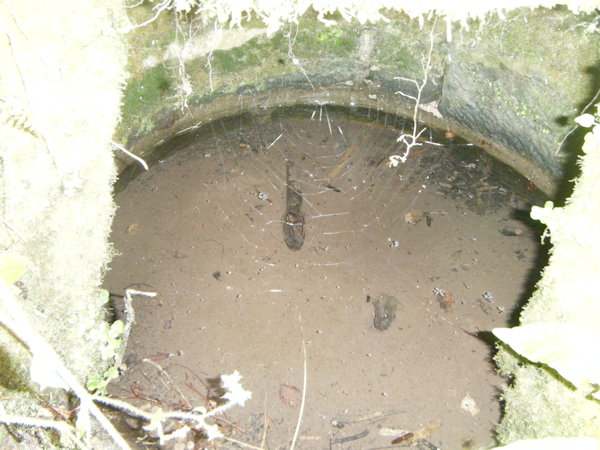 |
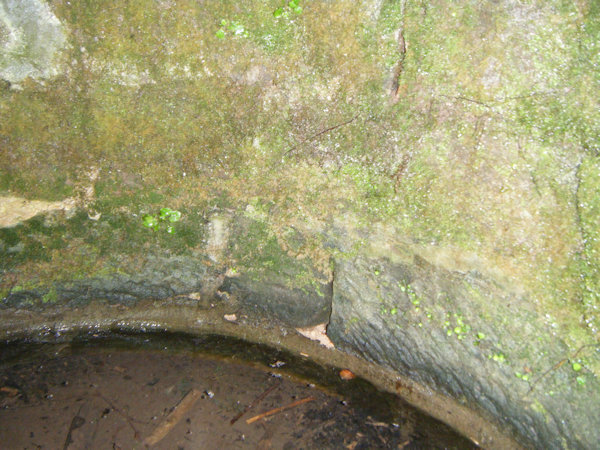 |
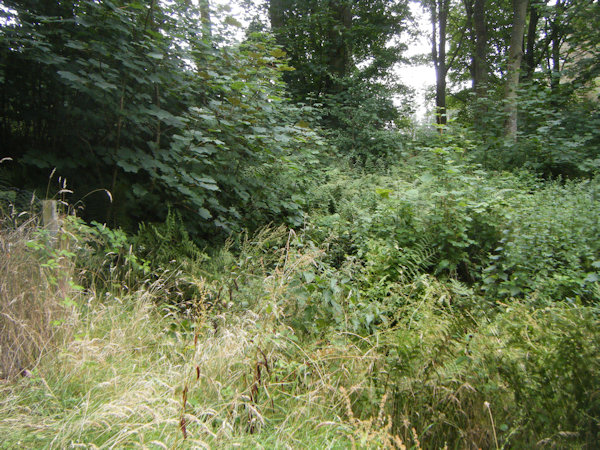 |
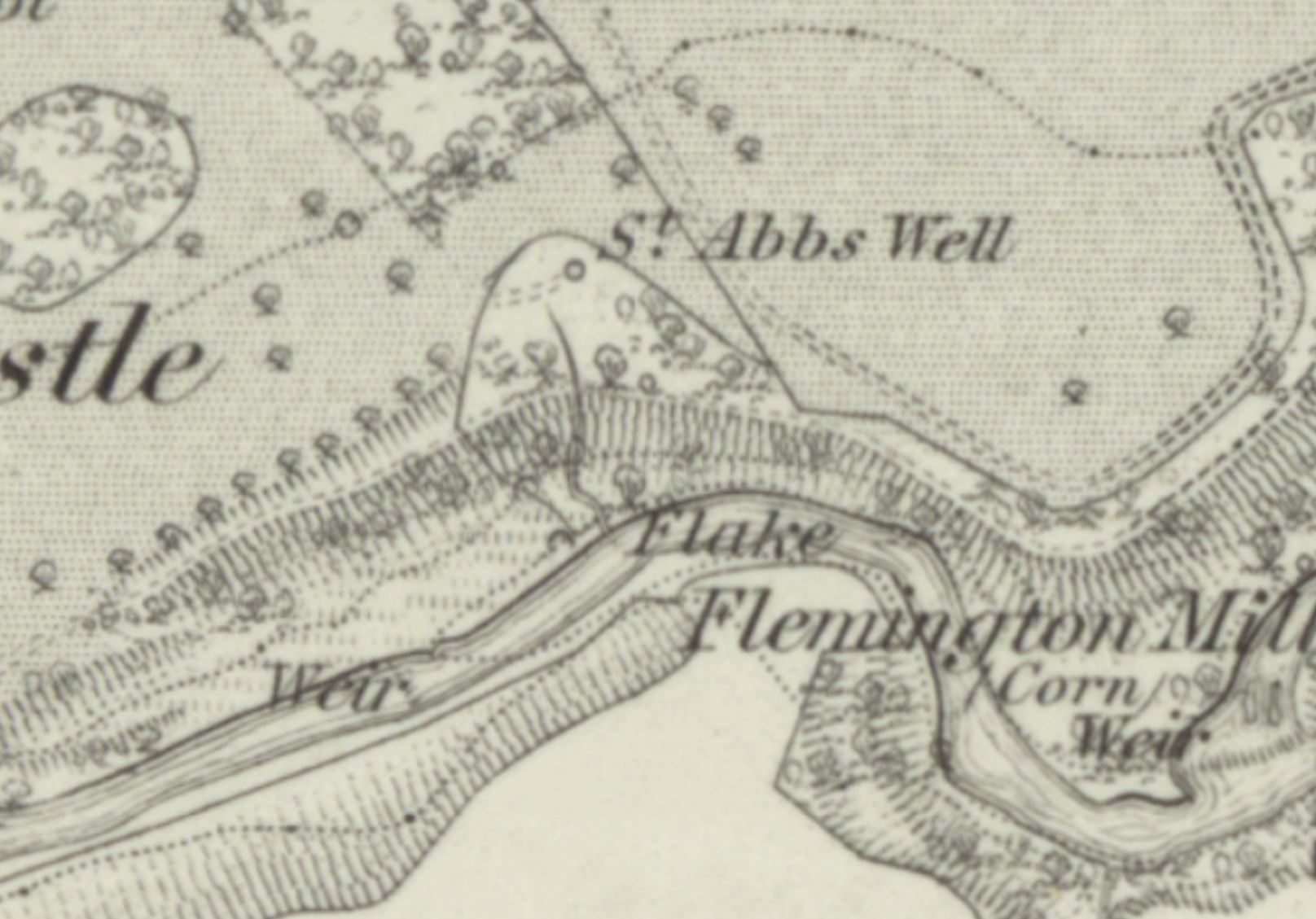 |
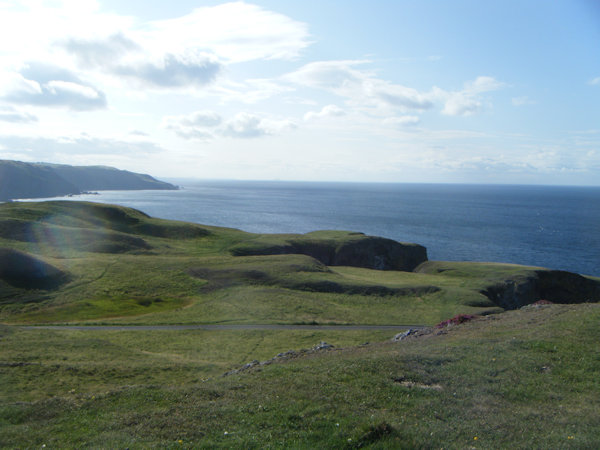 |
|
Access: St Abb's Well is located just off a circular walk that leads through the grounds of Ayton Castle. |
Images:
Old OS maps are reproduced with the permission of the National Library of Scotland
Copyright 2025 britishholywells.co.uk